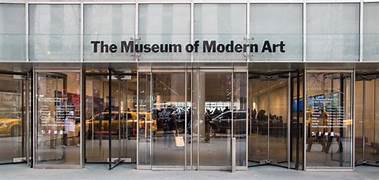In 1929, the United States saw the birth of an institution that would revolutionize the world of art and become a global hub for modern and contemporary art—the Museum of Modern Art (MoMA). Located in New York City, MoMA quickly established itself as a leading institution dedicated to the exhibition and preservation of modern art. The idea for MoMA originated from three influential women: Abby Aldrich Rockefeller, Lillie P. Bliss, and Mary Quinn Sullivan. These art patrons and collectors recognized the need for a space to showcase the groundbreaking artistic movements of the time, such as Cubism, Fauvism, and Surrealism, which were often met with skepticism and resistance. On November 7, 1929, MoMA opened its doors to the public for the first time. Its inaugural exhibition featured works by renowned artists such as Cézanne, Van Gogh, and Gauguin, among others. The museum's mission was clear: to challenge traditional notions of art and to promote the understanding and appreciation of modern and contemporary art. MoMA quickly gained recognition for its innovative approach to curation and its commitment to showcasing artists who were pushing the boundaries of artistic expression. The museum's exhibitions were not limited to paintings and sculptures but also included photography, film, design, and architecture, reflecting the diversity and interdisciplinary nature of modern art. One of MoMA's defining moments came in 1932 with the exhibition titled "Modern Architecture: International Exhibition." Curated by Philip Johnson and Henry-Russell Hitchcock, this exhibition introduced the concept of the International Style, which would go on to define modern architecture. The show featured influential architects such as Le Corbusier, Ludwig Mies van der Rohe, and Walter Gropius, among others, and showcased their designs for a new era of urban development. Throughout the years, MoMA continued to expand its collection and influence. It acquired significant works by artists such as Salvador Dalí, Piet Mondrian, Jackson Pollock, and Andy Warhol, among many others. These acquisitions not only enriched MoMA's collection but also solidified the museum's reputation as a custodian of modern and contemporary art. In addition to its exhibitions, MoMA played a crucial role in art education and scholarship. The museum established a research library and archives, making its resources available to scholars, students, and art enthusiasts. It also developed educational programs and initiatives to engage the public and foster a deeper understanding of art. Over time, MoMA underwent several expansions and renovations to accommodate its growing collection and visitor numbers. The most recent renovation, completed in 2019, increased the museum's exhibition space and included the integration of new technologies to enhance the visitor experience. Today, the Museum of Modern Art stands as one of the most influential and renowned art institutions in the world. Its collection spans a wide range of artistic mediums and periods, reflecting the ever-evolving nature of modern and contemporary art. MoMA continues to push boundaries, challenge conventions, and inspire artists and audiences alike, ensuring that art remains a vital and transformative force in society.
1929 U.S.A. – – Museum Of Modern Art
